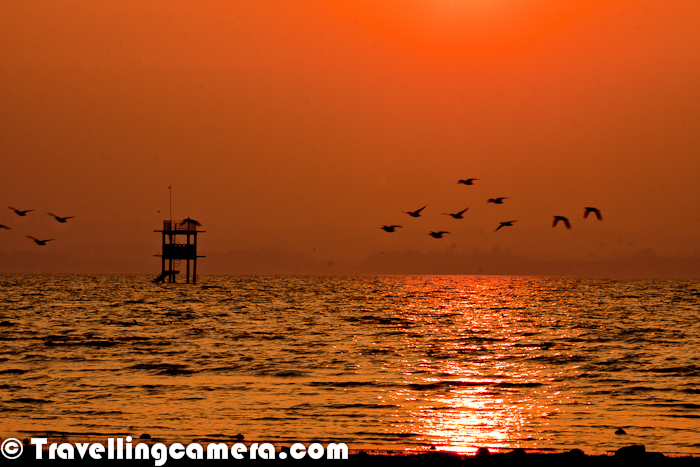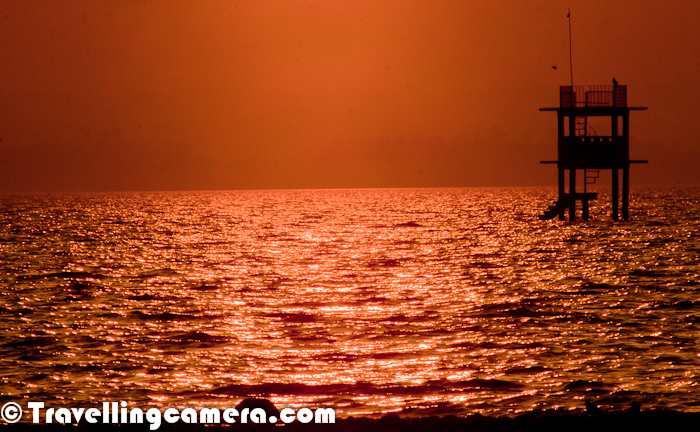Pong wetland is actually situated in the Kangra District of Himachal Pradesh, which is one of the largest man made wet lands of northern India formed by the construction of Pong Dam during 1974 across the Beas River. Let's have a quick Photo Journey to Pong wetland during Sunset Hours...
Pong wetland in Kangra District of Himachal Pradesh is the first major wetland which potentially offers a transitory resting reserve for the migratory birds coming from the Trans-Hialayan zone in winter season when the wetlands in Europe and North/Central Asia become frozen due to onset of winters. (Courtesy - WILD WINGS - PONG & ITS BIRDS by Devinder Singh Dhadwal)
Flocks of Waterfowls that breed in those areas in summer months undertake migration to Pong to spend winters in more congenial climatic conditions every year from October to March Months. Pong wetland has approximately 12500 square kilometers of regions, which is extended in Kangra, Mani and Kullu District of Himachal Pradesh !!!
Pong Reservoir is 42 kilometers long and 19 kilometers wide... The area of water body varies from 125 square kilometers at minimum water level at 1280 feets MSL in summer season to about 220 square kilometers at maximum water level of 1390 feets in rainy season and also leaving behind the maximum draw down area of about 80 square kilometers.
Pong wetland earned the distinction of being among the global class of selected sites. This is the first wetland of the state of have got the global arm of protection and declared a 'RAMSAR SITE' in year 2002.
Dhualadhar Mountains are feeder of water supply to Pong Lake. Below Pong Dam, a barrage was constructed during 1985-86 at Sathana. From this barrage, Sahanahar canal originates. The total distance of Pong Dam to barrage is about 4 kilometers. The barrage constitutes a shallow water body enclosing about 3 square kilometers. The area, is a haven for a variety of migratory birds specific to marshy conditions.
The Climate around Pong Water Reservoir is sub-tropical. Summer season extends from mid of March to the mid of July and the Monsoons start from first week of July to mid September of every year. The winter is mild and starts from mid-Nov till mid-March. The maximum temperature goes up to 45 degree Celsius, whereas the minimum temperature is recorded 3 degree Celsius in winters. Annual average rainfall in Pong Region is around 120 Centi-meters.
All these wonderful details about Pong Water Reservoir are collected from a book called 'Wild Wings - Pong & It's Birds' which is written by Devinder Singh Dhadwal !!! Every Bird lover love to check out this marvelous book, which is written after extensive research on various species of birds during last 9 years... More Photo Journeys will be shared with appropriate details around birds migrate to Pong Wetland !!!








.jpg)
Comments